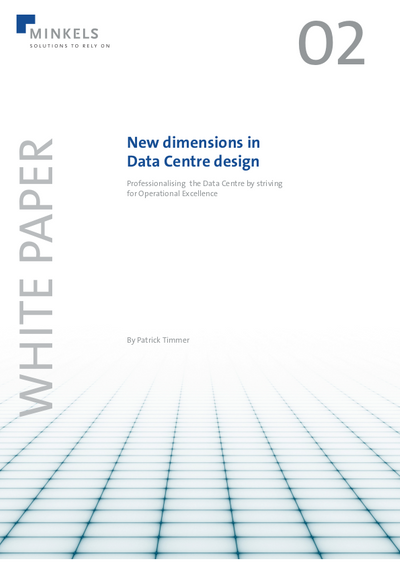New dimensions in Data Centre design
The increasing demand and dependency on data and IT is gradually changing the world
we live in. As with many fields of industry Data Centres have reached the state where
it’s crucial to further professionalise and take responsibility for its impact. This can be
achieved by further creating a common language by which Data Centre experts communicate. The PUE has done a lot of good already but is just a start. The next important definition that will help Data Centres further professionalise is Operational Excellence. In the Data Centre context Operational Excellence strives for optimising the total cost and quality model of delivering IT-services. The initial design is considered of crucial importance for Data Centre owners to meet business goals and remain competitive throughout the whole lifetime. A poorly chosen initial design creates a difficult lifetime with many unnecessary challenges. A bad start is no start. Data Centre designers therefore play an important role. During the design, acknowledging the presence of several stakeholders can help understand the several perspectives and therefore the underlying drivers. Since the reality is unruly when it comes to creating solutions for Data Centres, it is believed that no matter the type of Data Centre involved, commercial or corporate, large or small, an optimal and reliable solution can be found as long as some guiding principles are kept in mind.
The 'New Dimensions' complement existing design tools:
1. The volumetric dimension: Instead of thinking in m² a DC designer should think in m³.
2. Reducing complexity of the design will pay-off from an energy consumption and manageability point of view.
3. Integration3: Three levels of integration must be accomplished as part of creating an
Operational Excellent design.
◦ Physical Integration
◦ Control Integration
◦ Knowledge Integration
These three main guidelines result in a Data Centre which is able to deliver IT-services
which are qualitative and market competitive. The ‘Volumetric’ dimension can further
help Data Centre owners understand the metrics and choices that are involved in creating
a successful DC. Hopefully it will inspire Data Centre designers to document their solutions
complementing to a widespread overview of available solutions for each type of
Data Centre.




